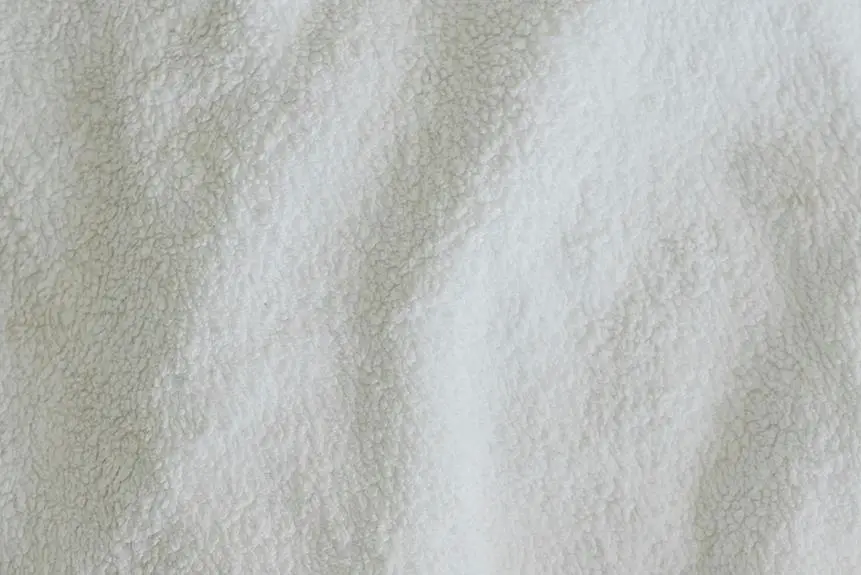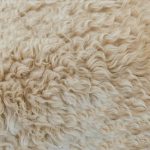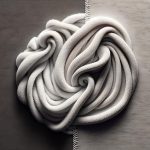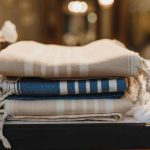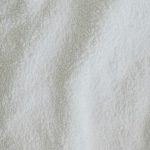When designing garments, you're likely considering French terry fabric for its softness, absorbency, and versatility. But have you stopped to think about how it affects breathability? The looped pile on one side of the fabric can be a double-edged sword – it efficiently wicks moisture away from the skin, but can also trap warm air. The density of the fabric plays a crucial role too. As you weigh the benefits of French terry for your next project, you're probably wondering: what's the real impact on breathability, and how can you balance moisture-wicking properties with airflow?
Table of Contents
What Is French Terry Fabric
You're likely familiar with French terry fabric, but what exactly is it and how does it differ from other types of fabric?
French terry is a type of fabric that originated in France, characterized by its soft, absorbent, and lightweight properties. It's made from cotton, polyester, or a blend of both, and is often used to make comfortable clothing like sweatshirts, hoodies, and loungewear.
What sets French terry apart from other fabrics is its unique texture. It has a smooth surface on one side and a looped pile on the other, which gives it a plush and absorbent quality.
This texture also makes it prone to pilling, but that's a small price to pay for its comfort and versatility. French terry is also known for its excellent moisture-wicking properties, making it ideal for activewear and casual clothing.
When you wear French terry, you'll notice that it drapes well, doesn't cling to your skin, and keeps you cool and dry. Its breathability is one of its key benefits, which is why it's a popular choice for clothing that requires comfort and performance.
French Terry Weave and Density
When you consider the breathability of French terry fabric, you'll want to examine the weave pattern and density of the fabric. These two factors have a significant impact on how well your garment will breathe and perform.
Weave Pattern Effect
The unique weave pattern of French terry fabric plays a significant role in its breathability, as it creates a series of small loops on the fabric's surface that allow for airflow and moisture transfer.
When you look closely at French terry fabric, you'll notice that the loops are created by the weaving process, where the yarns are looped back on themselves to create a soft, plush pile.
This looped structure allows air to pass through the fabric, making it more breathable than a flat weave fabric.
The weave pattern also affects the fabric's ability to wick moisture away from the skin.
As you move, the loops in the fabric help to lift moisture away from your skin, allowing it to evaporate more quickly.
This makes French terry fabric ideal for active wear, as it helps to keep you cool and dry.
Additionally, the weave pattern helps to prevent the buildup of heat and sweat, making it a great choice for garments that require both comfort and performance.
Fabric Density Impact
French terry's fabric density significantly impacts its breathability, as a denser weave can reduce airflow and moisture transfer, while a looser weave allows for greater airflow and comfort.
When you wear a French terry garment with a denser weave, you may notice it can feel warmer and more humid next to your skin. This is because the dense weave restricts airflow, trapping warm air and moisture close to your body.
On the other hand, a looser weave allows for better airflow, enabling your skin to breathe and stay cool.
As you consider the fabric density of your French terry garments, think about the activity level and climate you'll be in. For high-intensity activities or warm weather, a looser weave can be beneficial.
However, for colder climates or low-intensity activities, a denser weave may be more suitable. You can also consider layering garments with different fabric densities to achieve the perfect balance of breathability and warmth.
Moisture Wicking Properties
When it comes to moisture wicking properties, you're likely looking for a fabric that can efficiently manage sweat and dry quickly.
You'll want to consider the moisture transfer rate, or how quickly the fabric can move moisture away from your skin.
Moisture Transfer Rate
By understanding how moisture transfer rates affect garment breathability, you can better appreciate the role of French terry in managing moisture wicking properties that keep you dry and comfortable.
Moisture transfer rate refers to the speed at which moisture is transferred from your skin to the fabric and then evaporated.
French terry's unique looped pile construction allows for efficient moisture transfer, drawing sweat away from your skin and releasing it into the air.
Efficient moisture transfer: French terry's looped pile construction allows for quick transfer of moisture from skin to fabric.
High moisture absorbency: French terry can absorb a significant amount of moisture, making it ideal for activewear.
Breathable fabric: French terry's open weave construction promotes airflow, allowing moisture to evaporate quickly.
Moisture wicking properties: French terry's moisture wicking properties help keep you dry and comfortable during physical activity.
Temperature regulation: French terry's moisture transfer rate helps regulate body temperature, preventing overheating and discomfort.
Drying Speed Performance
As you engage in physical activity, you expect your activewear to dry quickly, and the moisture wicking properties of French terry play a significant role in its drying speed performance. You want your clothes to dry fast so you can stay comfortable and focused on your workout. French terry's unique looped pile construction allows for excellent moisture transfer, drawing sweat away from your skin and evaporating it quickly.
When you wear French terry activewear, you'll notice that it dries significantly faster than other fabrics. This is because the loops in the fabric create a larger surface area, allowing for more efficient evaporation of moisture. Additionally, the fabric's breathability helps to regulate body temperature, preventing overheating and discomfort. As a result, you can enjoy your workout without feeling weighed down by heavy, soggy clothing.
In terms of drying speed performance, French terry is an excellent choice for activewear. Its moisture-wicking properties and breathable design make it an ideal fabric for athletes and fitness enthusiasts who demand high-performance clothing. Whether you're running, training, or just lounging around, French terry's drying speed performance will keep you comfortable and dry.
Breathability Comparison to Cotton
You'll often find that cotton is considered the gold standard for breathability in casual garments, but how does French terry stack up against it?
When it comes to breathability, French terry and cotton share some similarities. Both fabrics allow for airflow and moisture transfer, making them suitable for casual wear.
However, there are some key differences. French terry has a looped pile construction, which can trap warm air and reduce breathability in certain situations.
Cotton, on the other hand, has a more open weave that allows for better airflow and moisture transfer. Additionally, cotton is generally more absorbent than French terry, which can make it feel cooler against the skin.
French terry is often blended with other fibers, such as polyester or spandex, which can affect its breathability. Furthermore, French terry's breathability can also be influenced by the weight and thickness of the fabric.
Effects on Garment Ventilation
When it comes to garment ventilation, the unique properties of French terry can significantly impact airflow and moisture transfer, making it essential to consider these factors during the design process. You'll want to think about how the fabric's looped pile construction affects air movement and moisture evaporation.
As you design, consider the garment's intended use and the activities the wearer will be doing. For example, if the garment is for athletic wear, you'll want to prioritize ventilation to help keep the wearer cool and dry.
The density of French terry can also impact ventilation. A denser weave can reduce airflow, while a looser weave can improve it.
You can also manipulate ventilation by adjusting the fabric's weight and thickness. Thicker, heavier French terry fabrics can reduce airflow, while lighter weights can promote it.
By understanding how these factors interact, you can design garments that balance breathability and ventilation. This is especially important for garments that will be worn in warm or humid conditions, or for activities that generate a lot of heat and moisture.
Choosing Breathable French Terry
To choose a breathable French terry fabric, consider the specific requirements of your garment, such as the intended activity level and environmental conditions, and look for fabrics with a looser weave and lighter weight. This will help ensure that your garment allows for airflow and moisture transfer, keeping you cool and dry.
When selecting a breathable French terry fabric, keep the following factors in mind:
- Fabric weight: Lighter weights (around 200-250 gsm) are generally more breathable than heavier weights.
- Weave density: A looser weave allows for better airflow and moisture transfer.
- Fiber content: Blends with natural fibers like cotton, bamboo, or linen tend to be more breathable than synthetic fibers.
- Finishing treatments: Some fabrics may have special treatments to enhance breathability, such as moisture-wicking coatings.
Frequently Asked Questions
Is French Terry Fabric Suitable for Activewear?
When choosing activewear, you'll want a fabric that wicks sweat and dries quickly. French terry can be a good option, as it's absorbent and breathable, but it may not be the best for high-intensity activities.
Can French Terry Be Used for Summer Clothing?
You might consider French terry for summer clothing, but keep in mind it can be warm and heavy. Look for lightweight versions or blends with breathable fabrics to create a more suitable summer garment for you.
Does French Terry Shrink in the Wash?
You're wondering if French Terry shrinks in the wash? Generally, French Terry can shrink slightly, around 5-7%, but this depends on the fabric blend, washing method, and drying temperature; it's best to check the care label.
How Does French Terry Compare to Fleece?
You're considering French terry vs fleece for your next project. French terry has a softer, more absorbent texture, while fleece is thicker and more insulating. You'll get a more relaxed fit with French terry, too.
Is French Terry Fabric Prone to Pilling?
You're wondering if French terry fabric is prone to pilling? It can be, especially if it's made from low-quality cotton or polyester blends. However, high-quality French terry fabrics tend to resist pilling better.
- How Does Ring Spun Cotton Affect Garment Fit and Shape Retention? - August 13, 2024
- What Are the Challenges in Producing Ring Spun Cotton? - August 13, 2024
- Is Ring Spun Cotton Suitable for Plus-Size Clothing? - August 13, 2024

